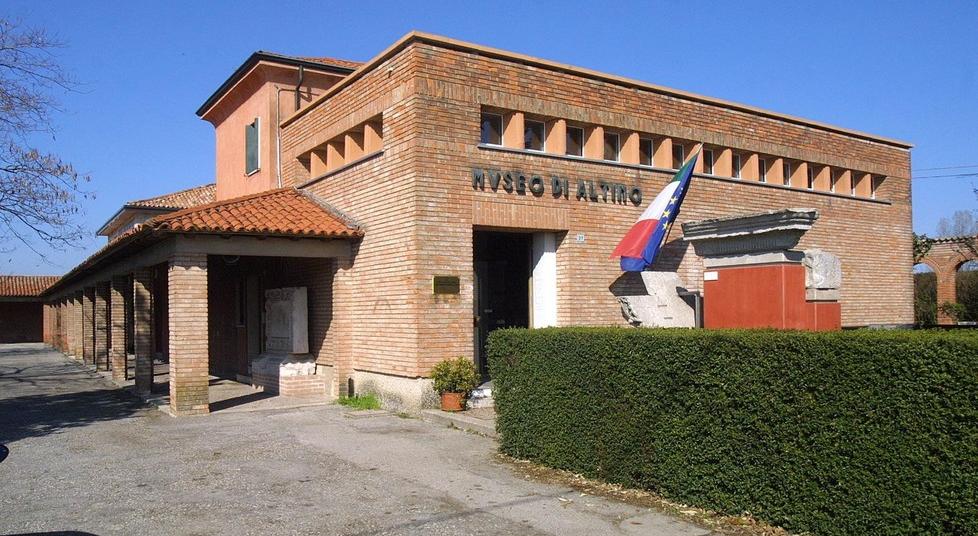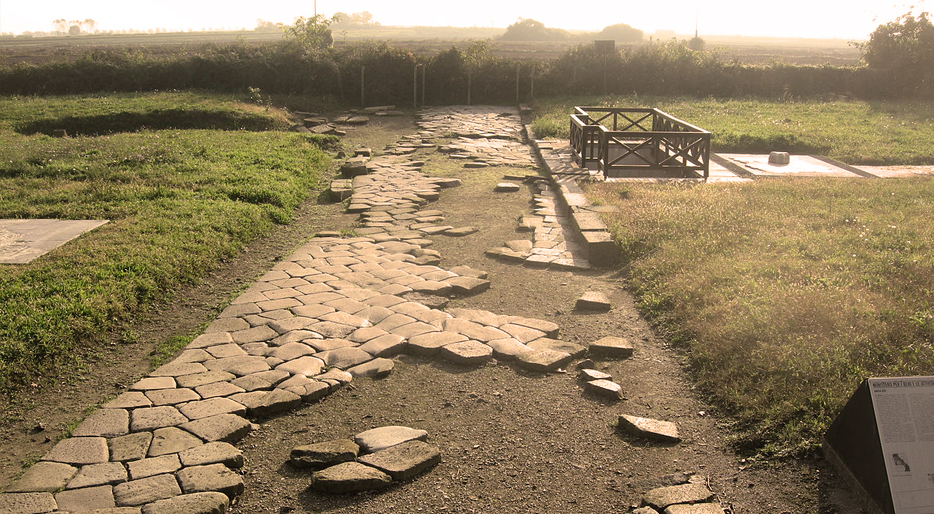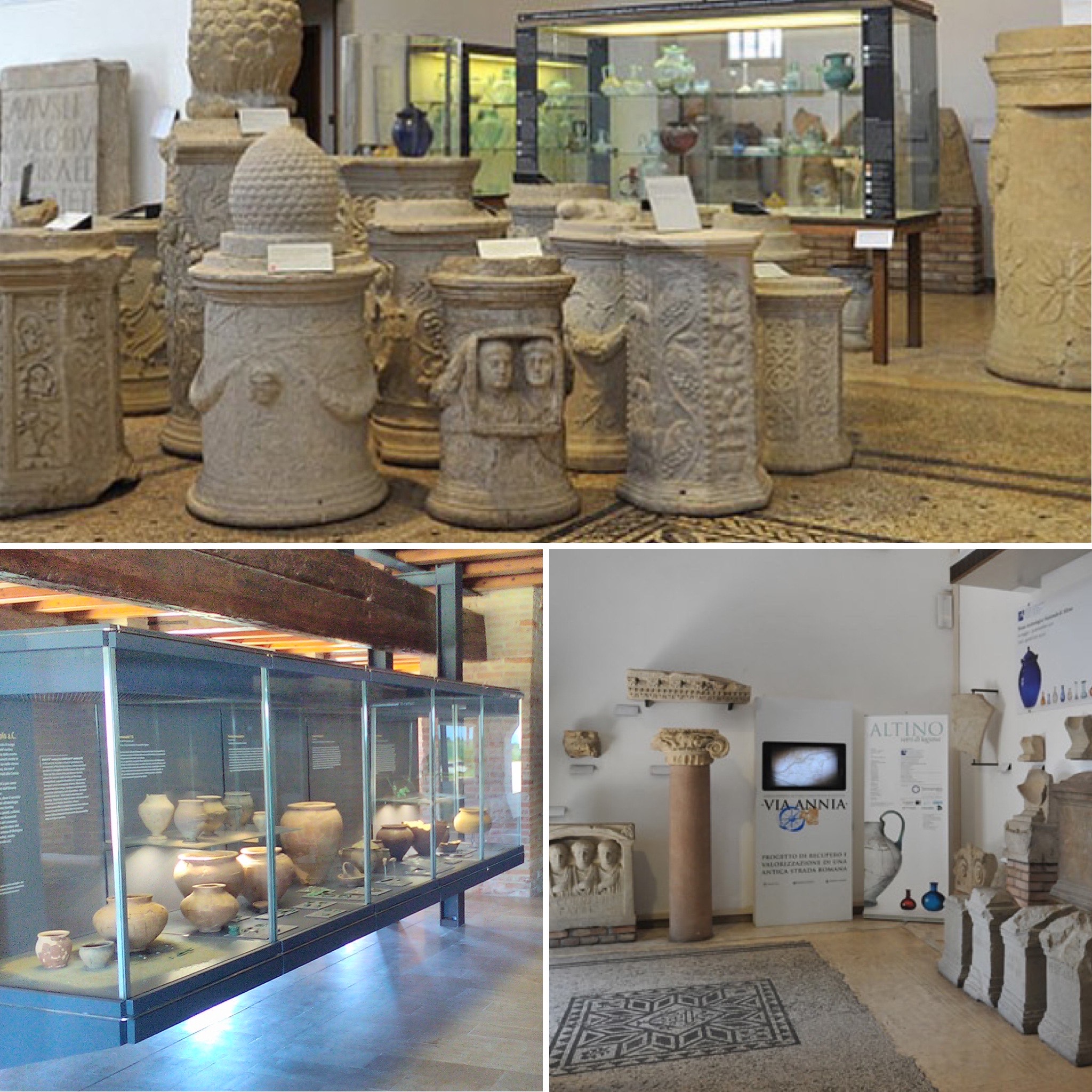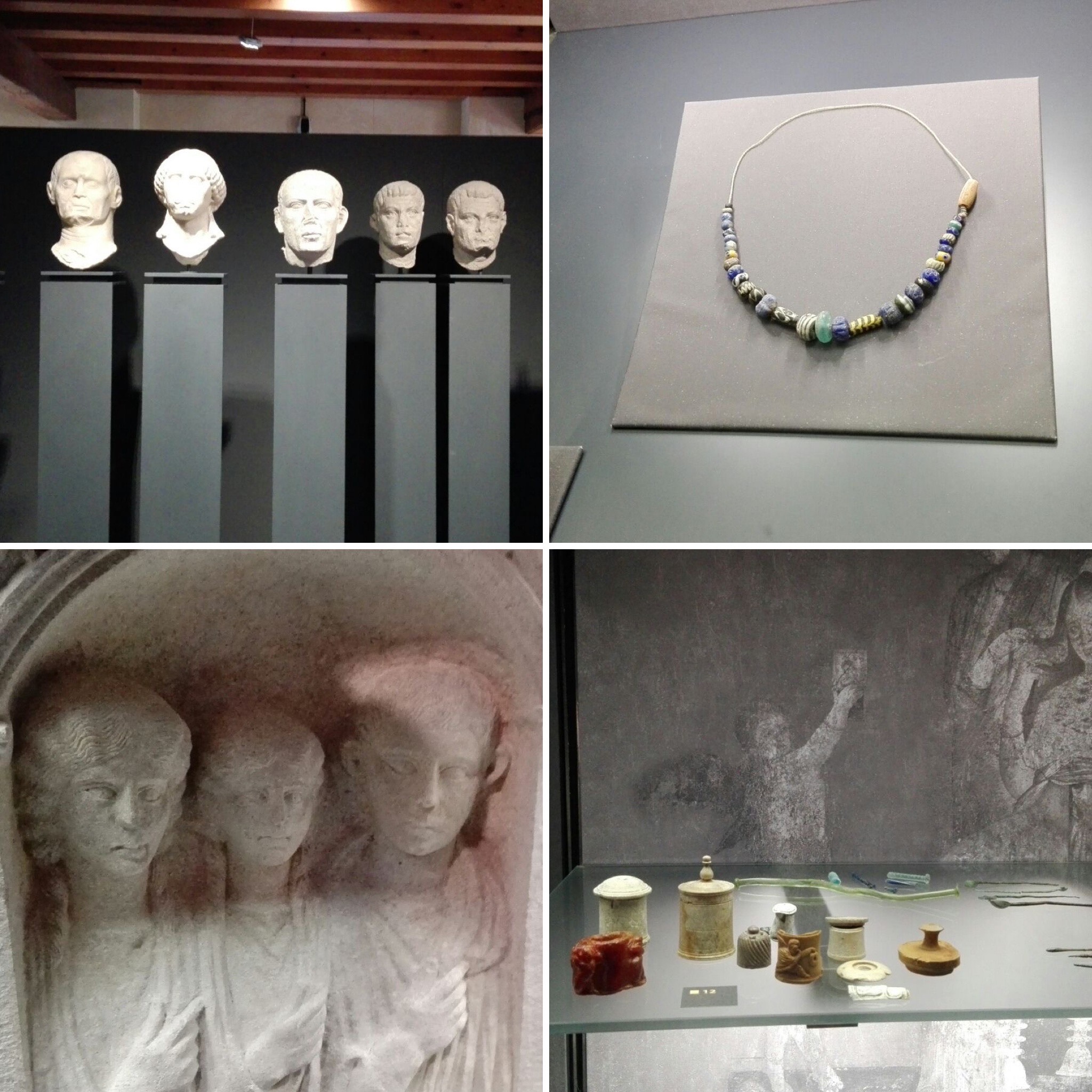The National Archaeological Museum of Altino today allows us to remember that not far from where Venice was built there was, in Roman times, a place of strategic importance for the territory.
All that remains of Altino in the past are precious finds that testify to what this centre overlooking the Lagoon was, according to tradition, the ancestor of Venice. As history teaches, the populations of the hinterland, fleeing from the Huns invasion, found refuge on the island of Torcello, later giving birth to the lagoon capital and one of the most extraordinary cities in the world.
Altino, a story began a long time ago

The finds that can be seen today in the National Archaeological Museum of Altino are mainly from the Roman age, but there are also some findings to remind us that even before this place had already been inhabited by one of the most interesting populations of the territory, the Paleovenetian one.
Thanks to the excavation campaigns we know that the area was inhabited since the VIII-V millennium B.C., but only in the Bronze Age (XV-XII century B.C.) had some human groups settled permanently. At the beginning of the first millennium B.C. then we can even speak for Altino of an inhabited centre to all effects with the presence of the Paleovenetians.
The presence of the Veneti in Altino is testified by some tombs that can be dated between the end of VII and II BC. The lack instead of finding evidence of housing structures supposes that the population, at the time, lived in wooden huts that, as is understandable, were easily destroyed over time.
A population that can however be defined as quite rich given the findings of some trousseaus with pieces from Greece, such as Attic ceramics with black and red figures.
It is also known with some certainty that the environmental characteristics of the Paleovenetian Altino were not so different from those of Roman times.
This is known thanks to the testimonies of Strabo and Vitruvius, both scholars of the Augustan age, who describe Altino as a city situated between the waters and the piles, similar to what Ravenna was like in the same period. From a geographical and environmental point of view, Altino was particularly interesting. Thanks to its proximity to the lagoon, in fact, the water flowed and drained, giving an extraordinary healthiness to these places. Finally, similarly to other centres in the Veneto, such as Adria for example, Altino was also linked to the sea. A determining factor for its prosperity, exactly as it will happen in the following centuries for Venice.
Altino in the Roman era

Like all of Venetia, Altino also became Roman. It was 131 B.C. when the process of Romanization began here with the construction of the Via Annia, a road built by the praetor Annio Rufo and which led from Adria to Aquileia. Altino had a slow process of urbanization that ended in 49-42 B.C. when it was granted the Roman right and it was called municipio.
By the end of the 1st century A.D. Altino became an important commercial centre thanks to the Via Claudia Augusta (which led from the Adriatic Sea through the Alps to the Danube in Bavaria), but also to other roads such as those that connected it directly to Treviso and Oderzo. Altino, in this way, can be defined as a real crucial junction for the routes between the Mediterranean and the North. There was no lack of water connections thanks also to the port that allowed Altino to overlook the lagoon and therefore look out over the Adriatic Sea.
In the Roman era it was customary to bury the deceased outside the city, therefore along the suburban roads that were lined for miles by funerary monuments. Sometimes the areas used as necropolises were so vast that they even bordered the more peripheral areas of the towns.
Altino confirms this custom and thanks to the finds made thanks to the excavations it was also possible to understand more precisely the boundaries of the urban area and to know exactly the layout of the extra-urban roads and partly, according to what remained of them, their structure. The extraordinary thing about Altino is that it is the only city in the whole Veneto region that has not had continuity of life in the same place after its decline. This, as is understandable, has allowed exceptional excavations also in the urban environment.
Thanks to the findings and historical sources we can therefore say that Altino had the period of greatest wealth between the end of the first century B.C. and the end of the I-early 2nd century A.D.
We know a lot about the life of its inhabitants, but unfortunately too little, as said before, about the building structure of the city.
For example, one of the most interesting discoveries, although not visible on the surface because no excavation campaign has been started, is an amphitheatre. In fact, thanks to aerial photometry it was possible to detect a structure that for proportions (about 20000 seats) resembles the famous arena of Verona.
Inside the museum it is possible to see an interesting reconstruction of the city through a map that shows Altino visitors how it must have looked in its heyday. Thanks to the surveys carried out with the technological tools available today it is possible to imagine how Altino must have looked to its inhabitants in Roman times.
A reconstruction that really leaves one speechless for the complexity of its conformation, but even more so for the awareness of how much is still preserved underground.
What can be understood is that the urban layout must have been irregular, due to the previous Paleovenetian settlement and the presence of small hills and canals. From the findings of mosaics, frescoes and architectural remains of buildings, it is possible to study and advance hypotheses on what the buildings must have looked like. In the centre of Altino it is thought that there was a temple dedicated to Venus and thanks to some sources there was also a basilica, that was a typical meeting place of a Roman forum.
The testimonies concerning Altino faded already at the end of the II century A.D. to become sporadic from the III century onwards. It can therefore be deduced that this centre also suffered the same fate as the other towns in the Venetia.
What Altino was after its decline is told us by the Tabula Peutingeriana (a 12th-13th century copy of an ancient Roman map showing the military streets of the Roman Empire) which shows Altino as a fortified city, even if the findings tell a different story. Information to be taken with caution, therefore, given that the reuse of materials, the shrinking of the city, the burials where there were previously dwellings, indicate instead a great decadence. In addition to the exhaustion of sources of sustenance, it must be taken into account that Altino has also suffered a deterioration of its environmental conditions with the rising sea level.
Finally, the invasions of the Huns of Attila in 452 A.D. forced the inhabitants of Altino to leave the mainland to take refuge on the island of Torcello, thus creating the conditions for the birth of Venice.
The National Archaeological Museum of Altino

Compared to other locations, even of minor importance, Altino has not had the same amount of dedicated studies. This is due to the fact that attention has always been paid to nearby Venice, whose origins are attributed to the Altinati who fled after the barbarian invasions.
For a long time it was therefore a forgotten locality, also for environmental reasons that did not make stable settlements favorable so not even a profitable exploitation for agriculture and breeding.
It is also significant that in the antique collections of the great Venetian families, in 1400, there were no objects from the Roman period coming from Altino, but from other places like Aquileia and Adria.
Since the mid-1800s, the Reali family, owners of most of the land in Altino, made it possible to carry out reclamation works to restore the area to a healthiness that would make it liveable.
It was in 1930 that the finds in Altino, which had taken place from 1892 to that moment, were made public. There was talk of a conspicuous number of works, especially funeral monuments.
A choice was made, so the material collected was not all that was present, but the one considered most interesting from a purely aesthetic point of view.
At Altino, therefore, it was the stone monuments that were saved and carefully preserved, those with inscriptions, glass of a certain value and precious objects for the material with which they were made.
It took some time even before thinking of a place where all the finds found and preserved until then could be made visible.
On 29 May 1960 the first seat of the National Archaeological Museum of Altino was inaugurated. Of very small dimensions, it was designed as an antiquarium consisting of just two exhibition rooms and a warehouse. Small spaces but more than sufficient at the time to collect the approximately 1000 finds that had come to light until then.
After the opening of the museum, however, systematic excavation campaigns began, thanks to the intervention of the Archaeological Superintendence.
In the period of time between 1966 and today vast areas of the ancient Altino have brought to light many interesting finds and today these are more than 40000.
Certainly of great interest is the discovery of the necropolis that rose along the Via Annia and other neighbouring areas. Thanks to these excavations more than 2000 grave goods and a large number of funerary monuments have come to light. In this way it was possible to collect valuable information about the Roman funerary culture.
A peculiarity of the National Archaeological Museum of Altino is certainly the fact that it was built in direct relationship with the vast surrounding archaeological area. The same visit route took this peculiarity into account, so that the itinerary started in the two exhibition rooms and continued with an external archaeological route.
The material found, however, continued to grow more and more and the spaces at a certain point were no longer able to contain and allow an adequate display of the finds. Extensions and the use of a couple of specially purchased rural buildings to preserve the finds became indispensable. All this while waiting to find a new location, more necessary than ever, every day more and more.
In 2014, the new location was finally inaugurated in a renovated nineteenth-century rural building, which is part of an architectural complex consisting of historical parts and new construction.
What's in the museum

The first section is on the ground floor of a former rice mill. Here it is possible to admire a selection of finds that testify since the prehistoric age (X-II millennium B.C.) the human presence in the territory where Altino was born.
In the second section, instead, here are the testimonies of the development in the Iron Age (1st millennium B.C.) treated thematically: the religion, the inhabited area, the language, the writing, the necropolis. In this section are particularly interesting the imposing tombs of horses on display with the valuable trappings that belonged to them. A truly rare find of its kind.
On the first floor there is space dedicated to the transformations of Altino in the centuries of Romanization (II - I century B.C.) and then in full Romanization (I - III A.D.). Also in this case the thematic criterion is followed: territorial planning and roads, villas and domus, fashion and jewellery, personalities, society, professions, trade.
Just in this part of the route you can see some of the most interesting objects of the Roman Altino known to us.
Among them a series of jewels of a particular beauty, in some cases even contemporary taste. Among them a gold necklace of Salento factory dated between the end of the second century BC and the first century BC. The murrini glass, the marble portraits that decorated the richest funerary monuments. Not only that, there are also some toys for children and the leather soles of the shoes of the ancient inhabitants.
There is also a second floor to be set up with a section entirely dedicated to the Roman necropolis of Altino and the late antique history of the city.
Altino is not only mentioned in the museum but also in the two archaeological areas around it, 500 metres from the exhibition buildings, close to what was the first site of the museum.
One area allows you to see the remains of the monumental gateway that marked the northern entrance to the city from the first century BC and an urban hinge that connected the gate with the centre of Altino.
In the other area, instead, you can see a portion of the residential district that had allowed the urban expansion of Altino in the first century AD.
Particularly interesting for its excellent conservation is a stretch of urban road, paved with stone basoli and bordered by crepidini. This is overlooked by the domus Pantera named after the black and white mosaic depicting a panther drinking and which was to have been built in the atrium of the ancient dwelling.
Museum hours and how to get there
The National Archaeological Museum of Altino is located in Via S. Eliodoro, 56 - 30020 Quarto d'Altino (Venice).
Opening hours April-September:
Tuesday>Sunday : 8.30 - 19.30; closed Mondays
October-March:
Wednesday, Thursday, Saturday, Sunday : 8.30 - 19.30;
Tuesday and Friday: 9 am - 2.15 pm;
Monday closed
(the ticket office closes 30 minutes early)
Opening hours of the archaeological sites:
Sunday: 16:00 - 18:30
For any closures or changes in opening hours, always check 'Information and opening hours' on the website https://polomusealeveneto.beniculturali.it/musei/museo-archeologico-nazionale-e-area-archeologica-di-altino.
How to get there:
From Venice-Piazzale Roma or Mestre railway station take the ATVO bus towards San Donà di Piave.
When you arrive near the museum of Altino you enter a temporal dimension totally different from the one you experienced a few meters before. You breathe history, antiquity, past. You only have to look around to see how the conformation of this place speaks for itself.
Today Altino is an area included in the World Heritage Site "Venice and its lagoon", protected by UNESCO within the municipality of Quarto d'Altino.
A place that wrongly never had the right light while preserving a historical heritage of a certain importance. Too little, too little attention has been given to a cognitive itinerary of the territory that aims only at Venice without unfortunately taking into account its origins.
A museum, a place, an experience. This is Altino. Mark it on your next trip to Venice.










Lascia un commento